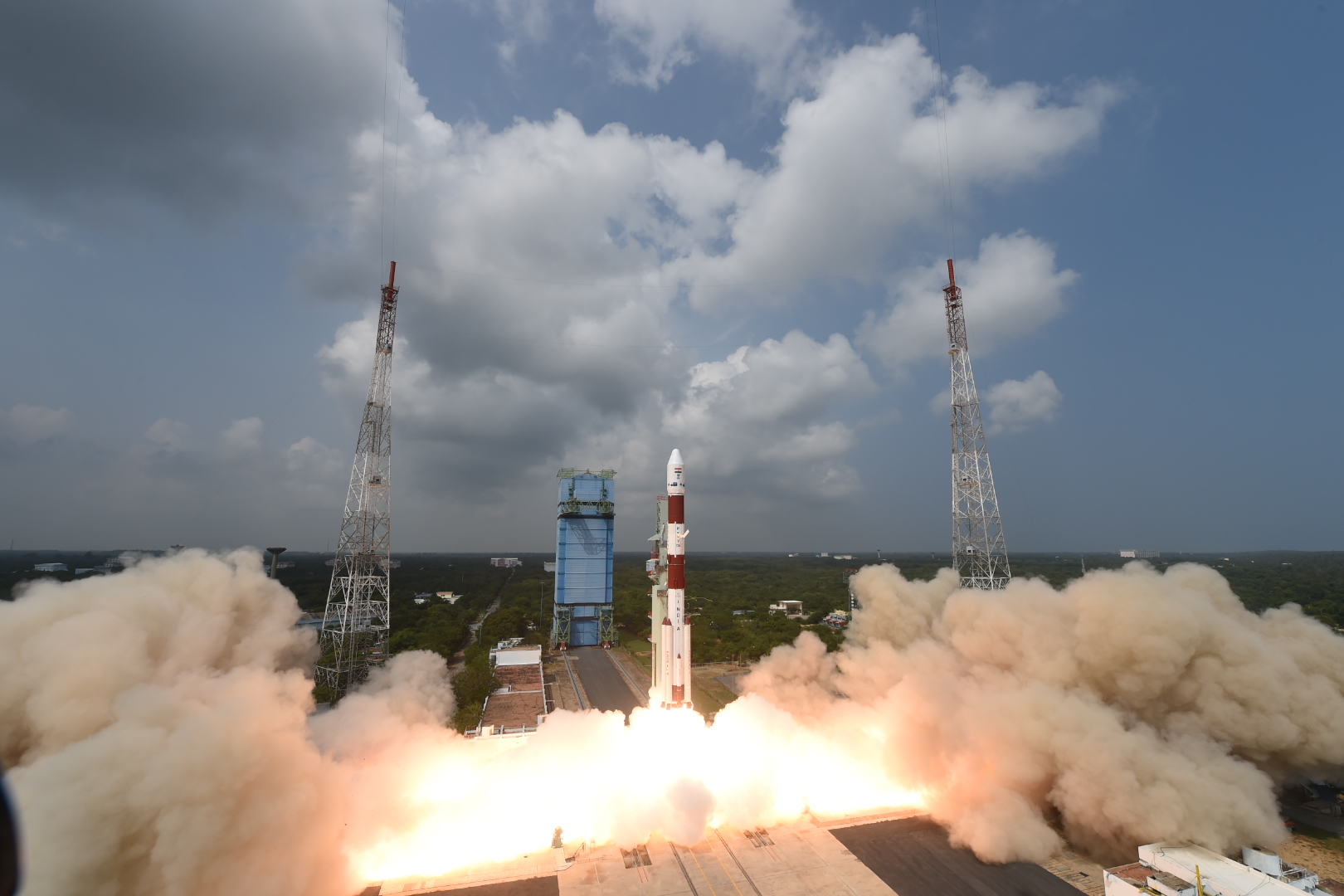
An Indian rocket launched an ocean-observing satellite and eight tiny ride-along spacecraft early Saturday (Nov. 26).
A Polar Satellite Launch Vehicle (PSLV) rocket is scheduled to lift off Saturday at 1:25 a.m. EST (0625 GMT; 11:55 a.m. India Standard Time) from Satish Dhawan Space Centre, on India's southeast coast.
The launch was webcast live, courtesy of the Indian Space Research Organisation, via the ISRO website.
Related: Facts about the Indian Space Research Organisation
The four-stage, 146-foot-tall (44 meters) PSLV deployed the primary payload, Earth Observation Satellite-06 (EOS-06), just over 17 minutes after liftoff, about 462 miles (743 kilometers) above Earth.
The 2,463-pound (1,117 kilograms) EOS-06 is the third spacecraft in India's Oceansat series. The satellite will use three science instruments to monitor sea surface temperatures and other ocean characteristics for at least five years. EOS-06 also carries a fourth instrument that will help beam data back to Earth.
After dropping off EOS-06, the PSLV's upper stage performed a series of maneuvers, descending to deploy the eight small satellites at an altitude of about 323 miles (520 km). The first of these passengers was expected to separate about 114 minutes into flight, and last deployed roughly six minutes later.
Get the Space.com Newsletter
Breaking space news, the latest updates on rocket launches, skywatching events and more!
These piggyback craft are a diverse bunch. For example, four of them are "Astrocast" cubesats, spacecraft about the size of a loaf of bread that will demonstrate "internet of things" technology, according to an ISRO mission description.
Another one, called Anand, will "demonstrate the capabilities and commercial applications of [a] miniaturized Earth-observation camera" in low Earth orbit, ISRO officials added.
Saturday's mission marked the 56th PSLV flight. The rocket is India's medium-lifter, capable of delivering up to 3,650 pounds (1,750 kg) of payload to sun-synchronous polar orbit.
India also operates a heavy lifter called the Geosynchronous Satellite Launch Vehicle (GSLV), which can haul 17,640 pounds (8,000 kg) to low Earth orbit. The nation also just debuted its Small Satellite Launch Vehicle (SSLV), but things didn't go according to plan; the rocket failed to deliver its payloads to the proper orbit during its inaugural mission in August.
Mike Wall is the author of "Out There" (Grand Central Publishing, 2018; illustrated by Karl Tate), a book about the search for alien life. Follow him on Twitter @michaeldwall. Follow us on Twitter @Spacedotcom or on Facebook.
Join our Space Forums to keep talking space on the latest missions, night sky and more! And if you have a news tip, correction or comment, let us know at: community@space.com.

Michael Wall is a Senior Space Writer with Space.com and joined the team in 2010. He primarily covers exoplanets, spaceflight and military space, but has been known to dabble in the space art beat. His book about the search for alien life, "Out There," was published on Nov. 13, 2018. Before becoming a science writer, Michael worked as a herpetologist and wildlife biologist. He has a Ph.D. in evolutionary biology from the University of Sydney, Australia, a bachelor's degree from the University of Arizona, and a graduate certificate in science writing from the University of California, Santa Cruz. To find out what his latest project is, you can follow Michael on Twitter.









